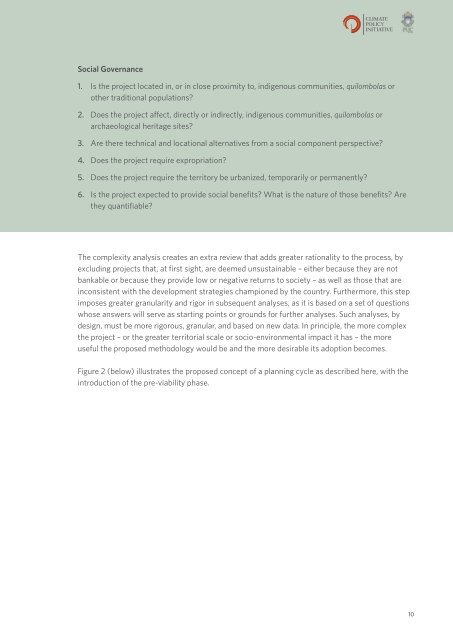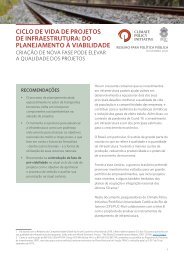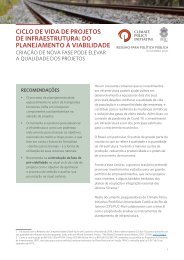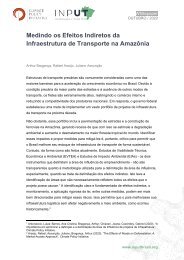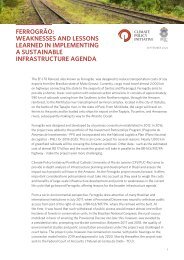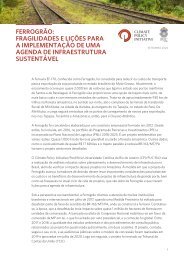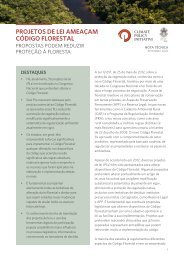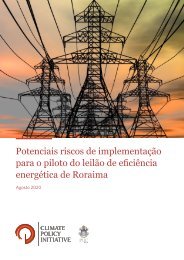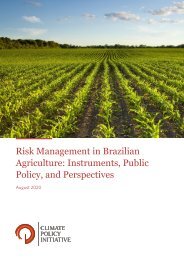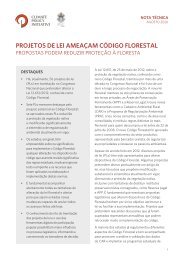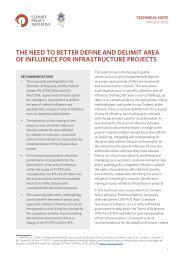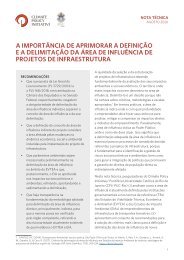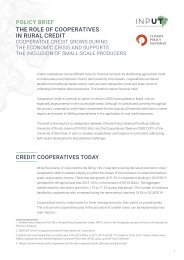Brazil’s Infrastructure Project Life Cycles: from Planning to Viability. Creation of a New Phase May Increase Project Quality
Create successful ePaper yourself
Turn your PDF publications into a flip-book with our unique Google optimized e-Paper software.
Social Governance<br />
1. Is the project located in, or in close proximity <strong>to</strong>, indigenous communities, quilombolas or<br />
other traditional populations?<br />
2. Does the project affect, directly or indirectly, indigenous communities, quilombolas or<br />
archaeological heritage sites?<br />
3. Are there technical and locational alternatives <strong>from</strong> a social component perspective?<br />
4. Does the project require expropriation?<br />
5. Does the project require the terri<strong>to</strong>ry be urbanized, temporarily or permanently?<br />
6. Is the project expected <strong>to</strong> provide social benefits? What is the nature <strong>of</strong> those benefits? Are<br />
they quantifiable?<br />
The complexity analysis creates an extra review that adds greater rationality <strong>to</strong> the process, by<br />
excluding projects that, at first sight, are deemed unsustainable – either because they are not<br />
bankable or because they provide low or negative returns <strong>to</strong> society – as well as those that are<br />
inconsistent with the development strategies championed by the country. Furthermore, this step<br />
imposes greater granularity and rigor in subsequent analyses, as it is based on a set <strong>of</strong> questions<br />
whose answers will serve as starting points or grounds for further analyses. Such analyses, by<br />
design, must be more rigorous, granular, and based on new data. In principle, the more complex<br />
the project – or the greater terri<strong>to</strong>rial scale or socio-environmental impact it has – the more<br />
useful the proposed methodology would be and the more desirable its adoption becomes.<br />
Figure 2 (below) illustrates the proposed concept <strong>of</strong> a planning cycle as described here, with the<br />
introduction <strong>of</strong> the pre-viability phase.<br />
10


